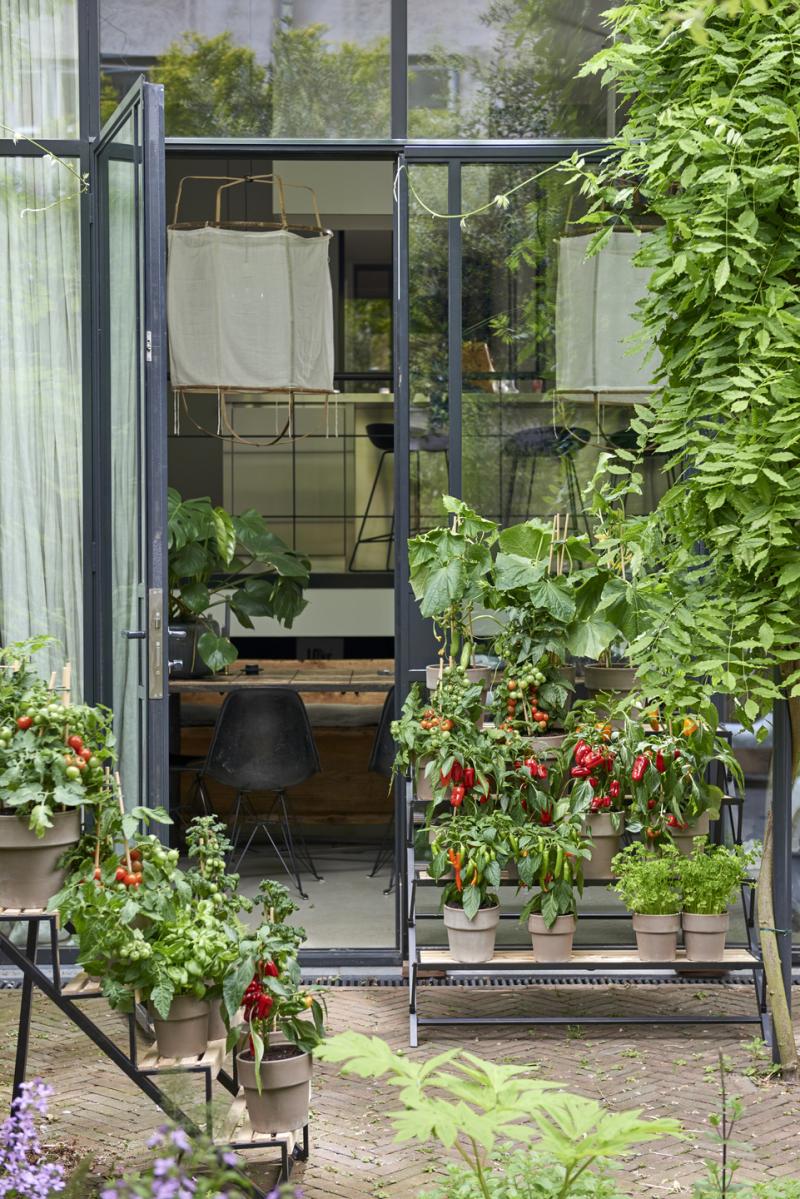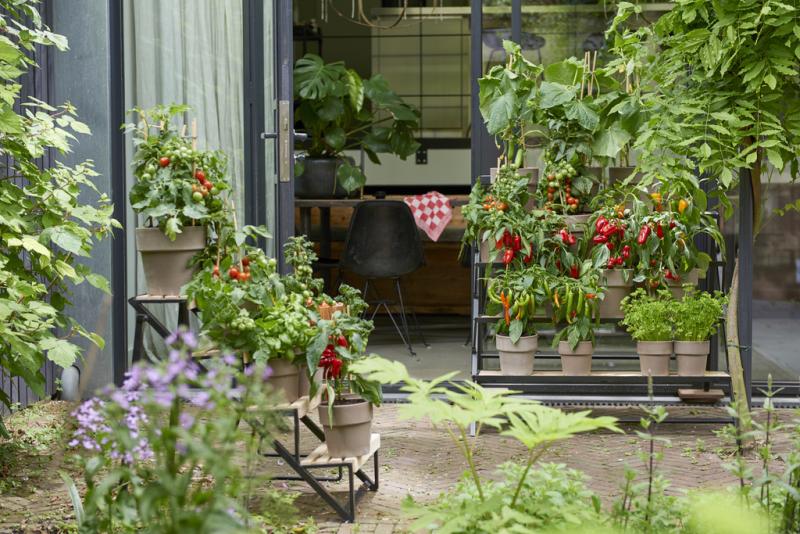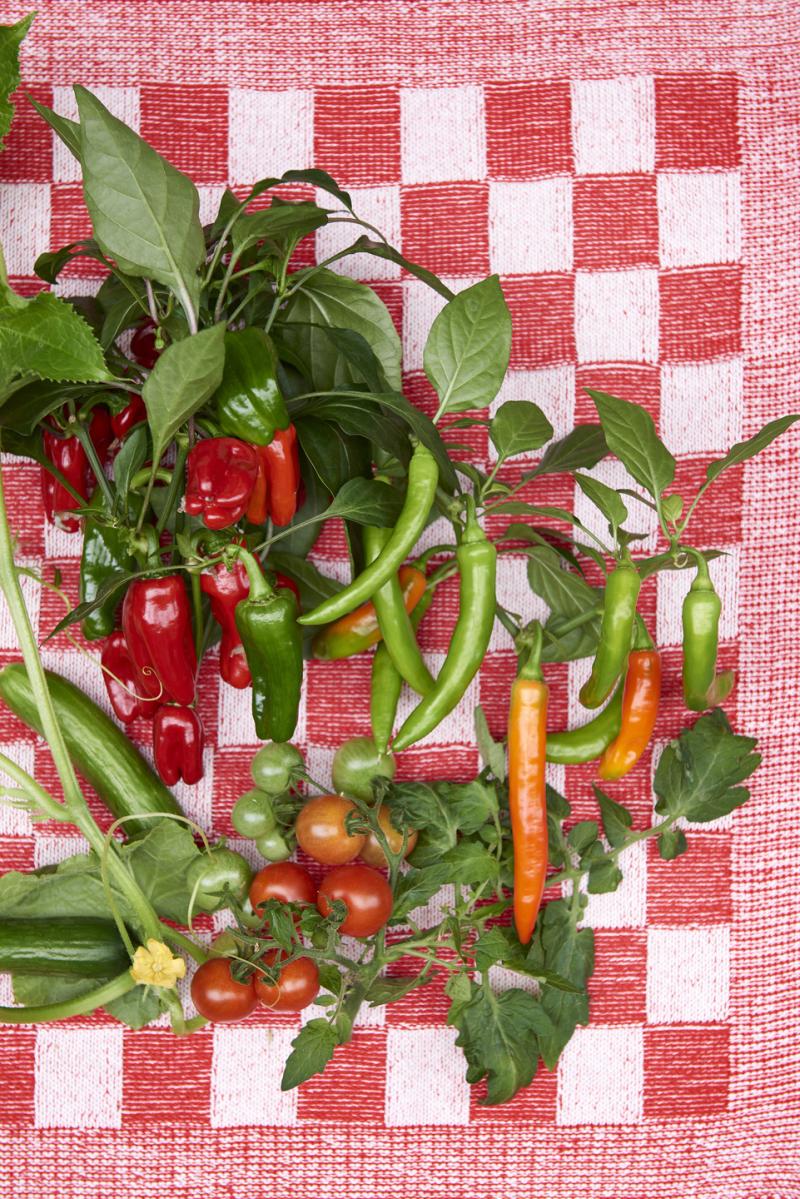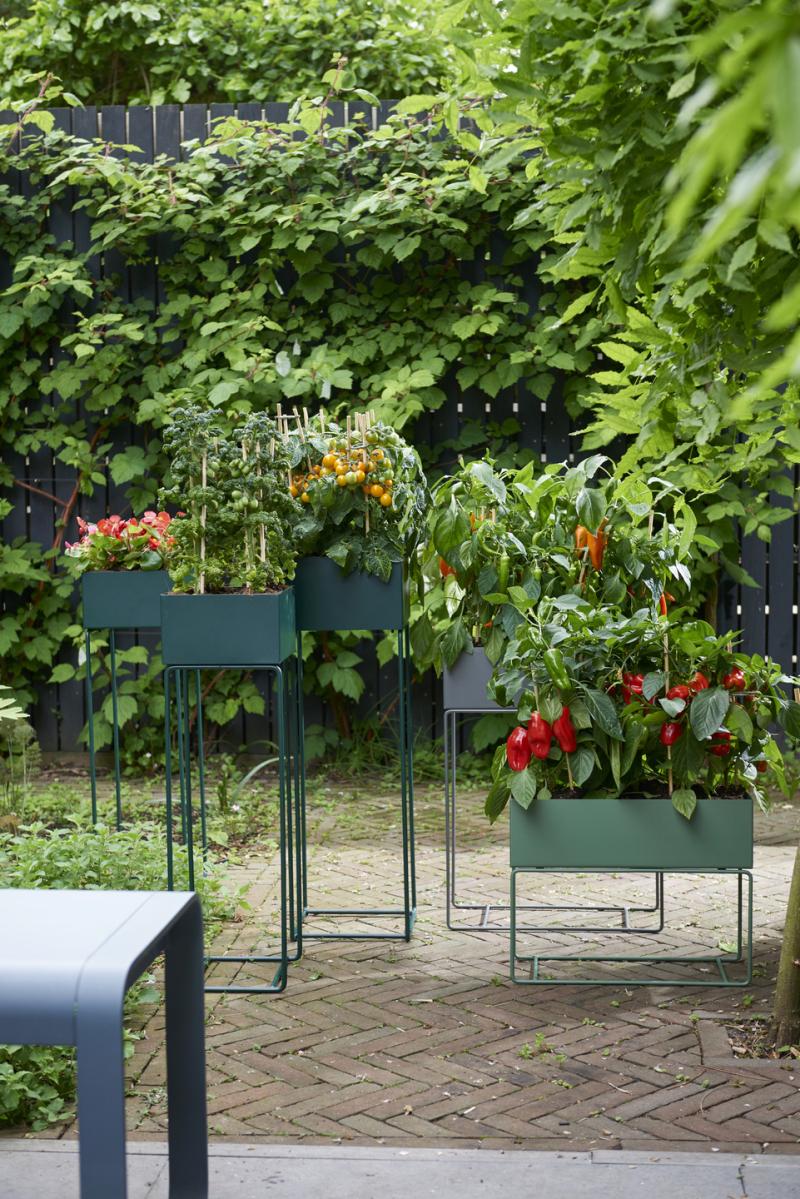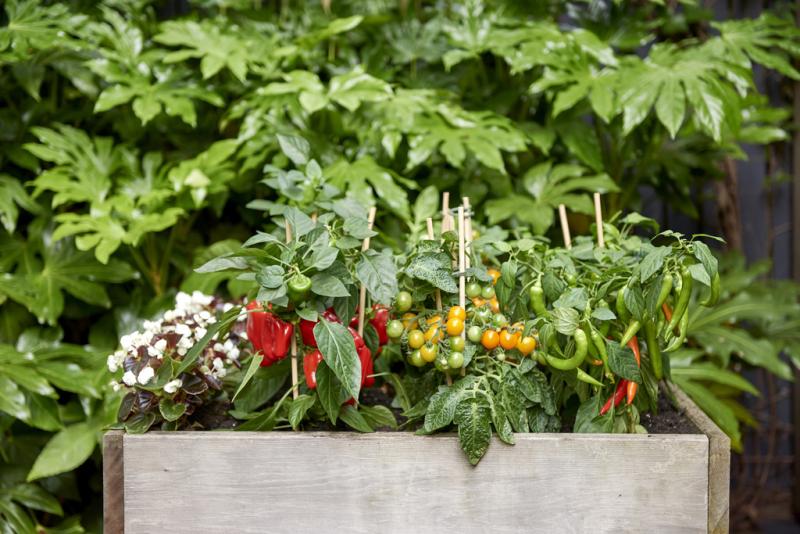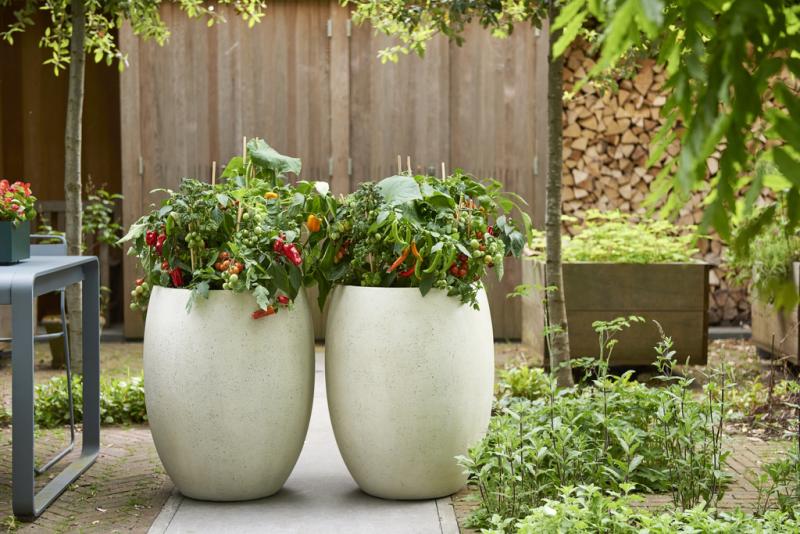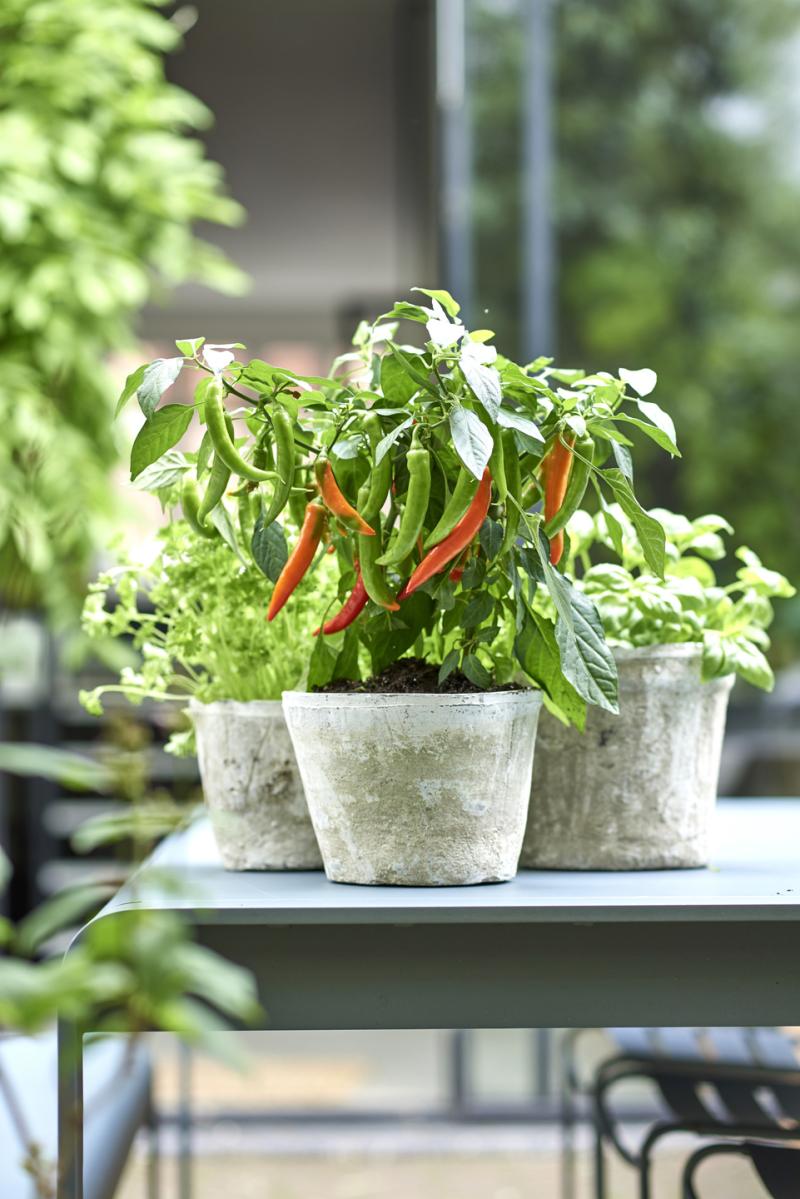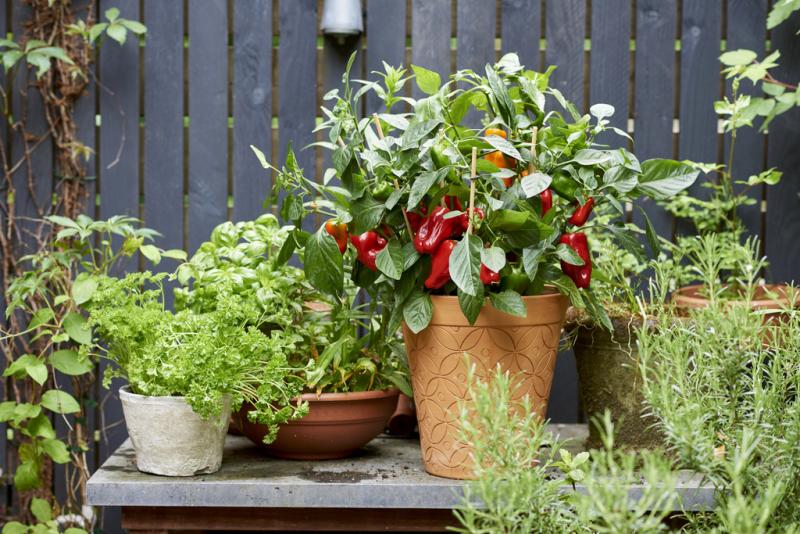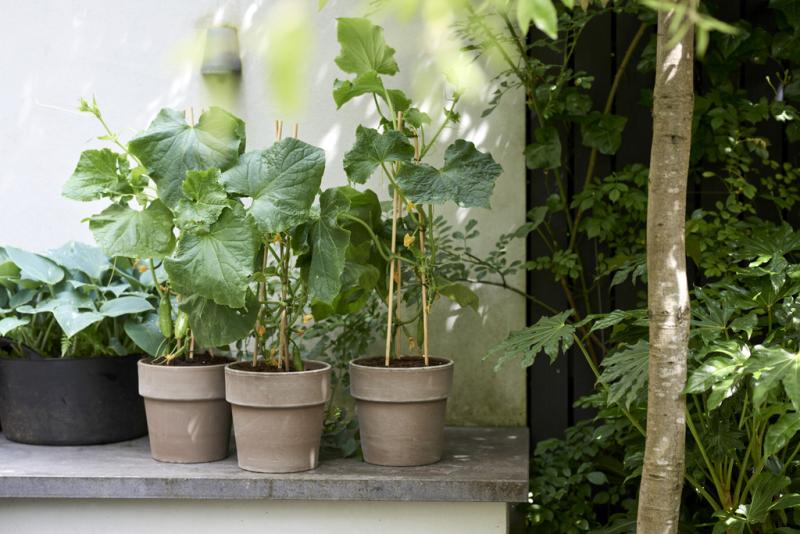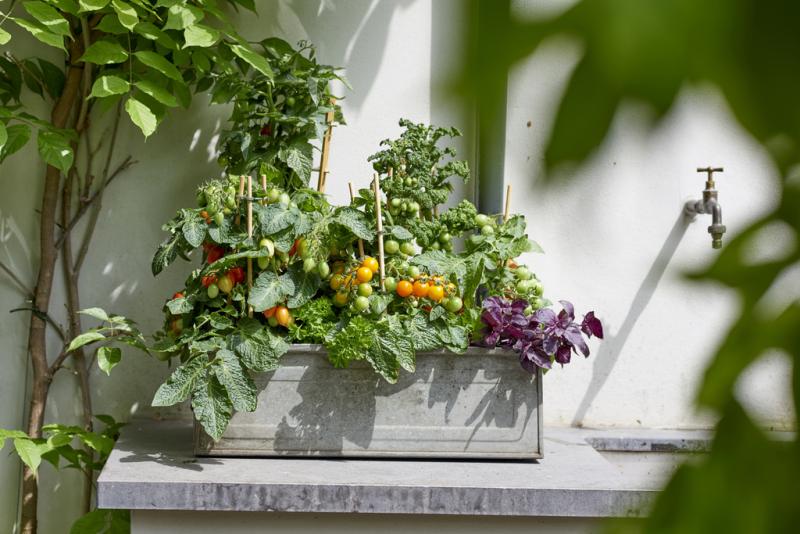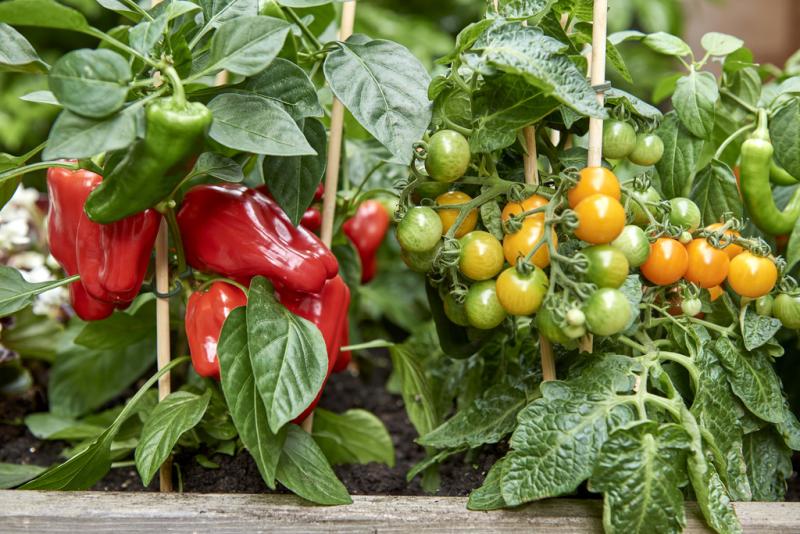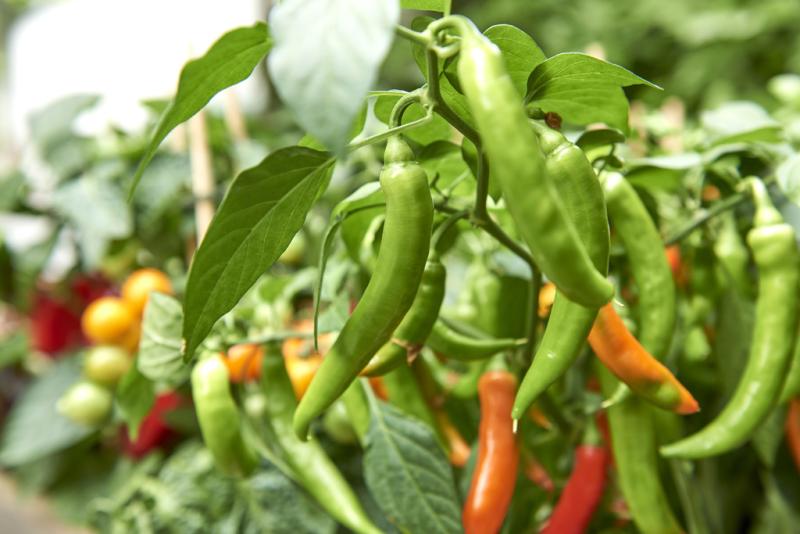Garden plants for May: vegetable plants
A vegetable patch with beautiful plants
Pick-your-own plants and kitchen gardens are incredibly popular, and vegetable plants often also look fantastic, so there’s a double benefit. On the one hand it’s a response to the growing interest in healthy, sustainable and vegetarian food, on the other hand it creates a decorative corner with productive green plants with produce which is good to grow and tasty to eat. May is a good month to plant vegetables in containers, pots or beds.
Range
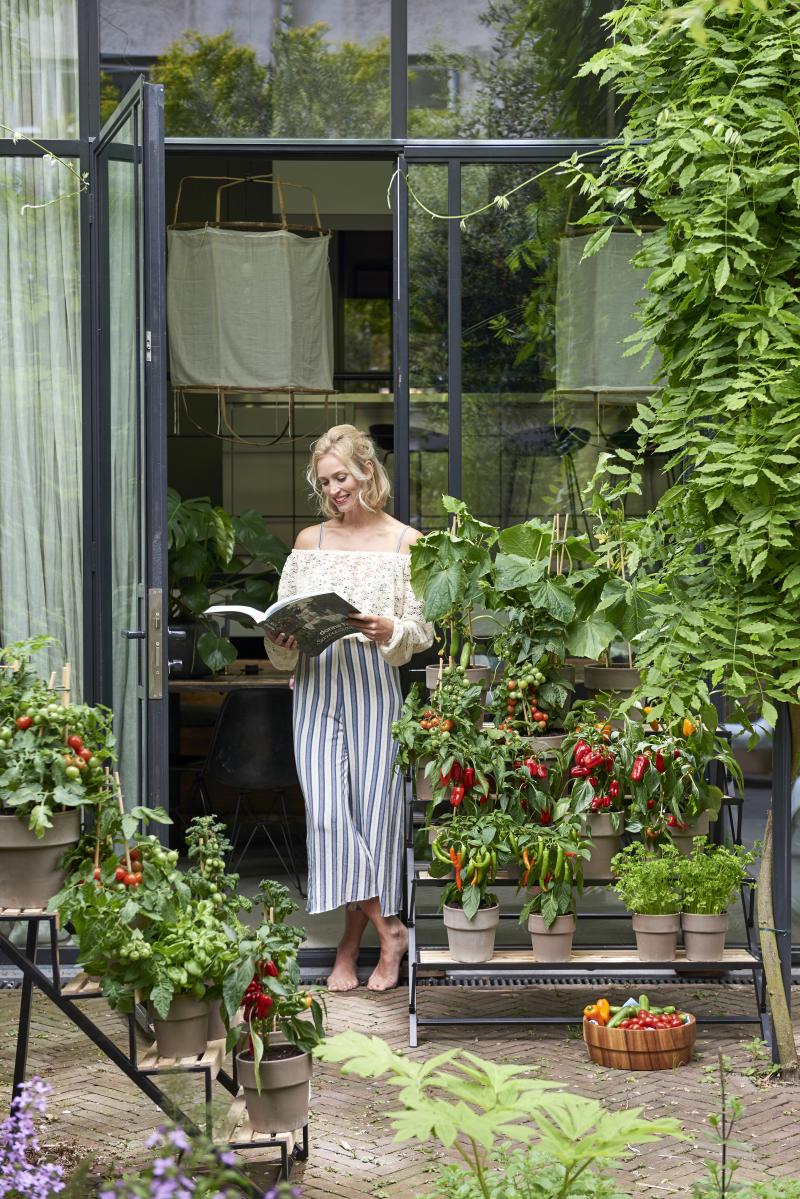
Vegetable plants trivia
- Are they vegetables or fruit? From a culinary and horticultural perspective the tomato, bell pepper, cucumber and chilli pepper are vegetables, although the odd purist will still maintain firmly that they are fruit.
- Vegetable plants also do very well on the windowsill: they grow upwards, so they need little space.
- Bell peppers contain twice as much vitamin C as oranges, and are also rich in vitamins E, B1 and B2.
- The gherkin is closely related to the cucumber and can be grown in the same way.
Origin
Bell and chilli peppers are so closely related that they bear the same name: Capsicum annuum. The bell pepper originates from South America, whilst the chilli pepper plant grows in India and South-East Asia.
The tomato (Solanum lycopersicum) is a member of a large family which also includes the potato. Tomatoes are native to Central America. The ancestors of the Mayas and the Incas grew them.
The cucumber (Cucumus sativus) originates from India, where it has been cultivated for its fruit for over 3000 years. The plants came to Western Europe via the Mediterranean with the Romans.
What to look for when buying
- When buying cucumber, bell pepper, tomato and chilli pepper plants particularly look for a fresh appearance and a good balance between plant and pot size.
- Also important is the number of flowers from which fruit can be produced, and preferably some young fruit already present to make the vegetable plant more appealing for sale.
- Many vegetable plants are grafted onto a rootstock which gives them a higher quality, more power and growing capacity, and makes them more resistant to disease.
- The soil must be slightly damp. The leaves should not be drooping, damaged or yellow. The plant must also be free of snails and aphids.
- Because vegetable plants need a lot of light, water and heat, a rapid turnover at the point of sale is important.
Sales and display tips
Mini-greenhouses, crates, baskets, climbing frames for plants, simple terracotta pots and bowls, small garden tools, workbenches - everything that contributes to the feeling of a city garden or kitchen garden is a suitable decor for vegetable plants. Arrange the plants by colour in lines on tables, to create stripes of yellow bell peppers, red tomatoes and green cucumbers. Hanging baskets with green herbs are inspiring, as are bowls with snack vegetables.
Care tips for consumers
- It’s best to plant a vegetable plant in a bed or in a more spacious pot or container after purchase so that it has room to grow and produce fruit optimally.
- Vegetable plants prefer a sunny, sheltered spot out of the wind.
- Canes, frames or netting help the vegetable climbers to grow upwards.
- Regularly removing side shoots (runners) means that the plant invests its energy particularly in itself and its fruit.
- All vegetable plants need a lot of water: the soil may not dry out, but preferably do not have the roots standing in water.
- The plants grow rapidly and consume a lot of energy, so that plant food is required once a fortnight to keep their strength up.
Downloadable POS material:
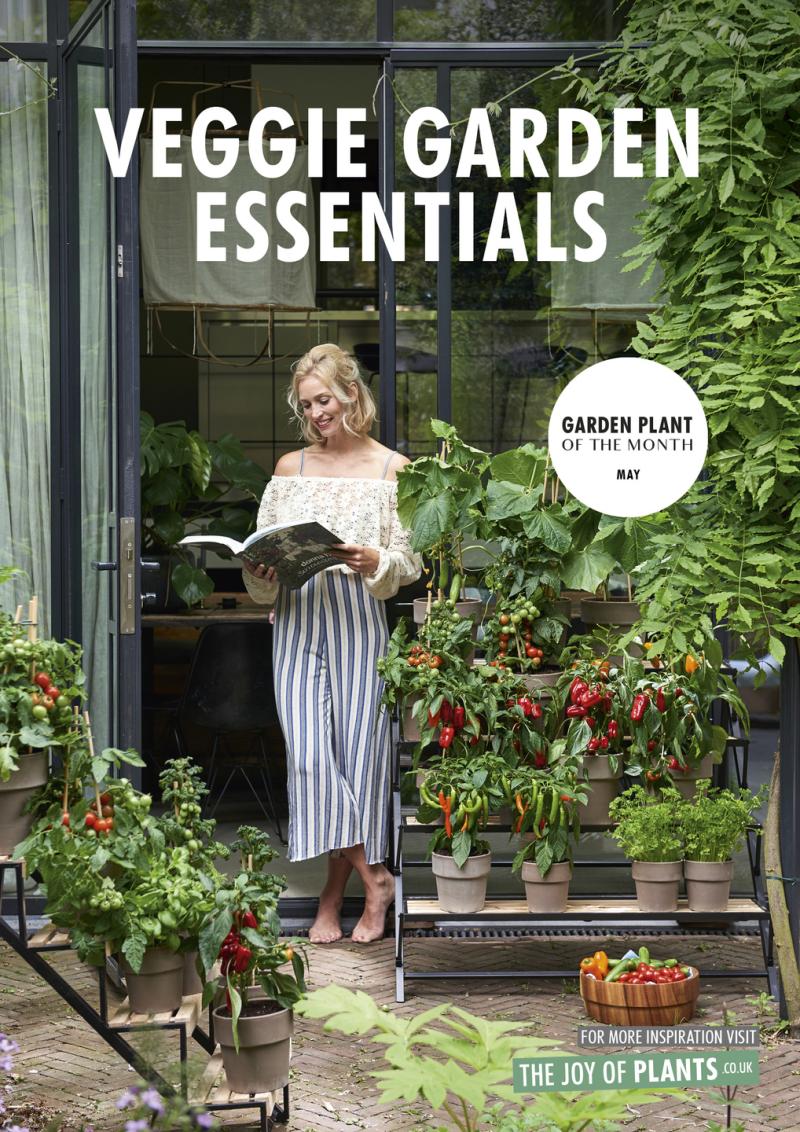
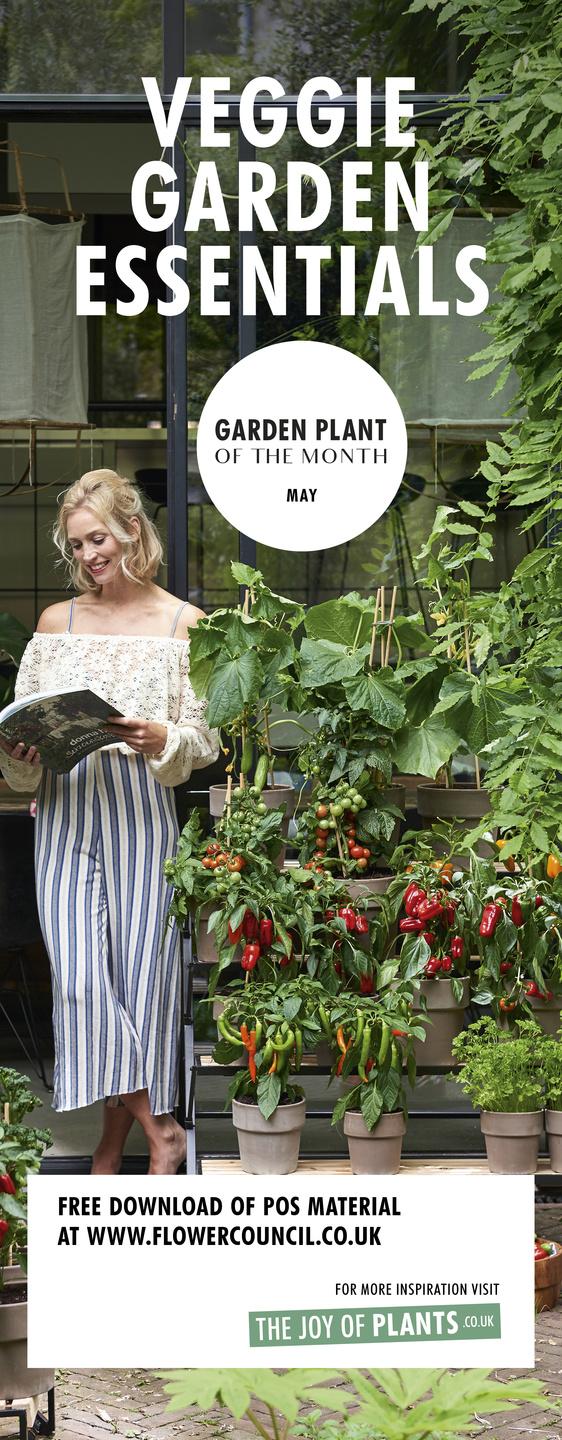
- Banner - Vegetable plants
Garden Plant of the Month
Vegetable plants are the Garden Plants for May 2018. The ‘Garden Plant of the Month’ is an initiative from the Flower Council of Holland. Every month the Flower Council works with representatives of the floriculture sector to choose one or more plants with an amazing look or unusual characteristics to put in the spotlight. Sometimes it will be a green star that’s highlighted, and sometimes an undiscovered treasure that deserves to be better known and merits a place in the garden, on the patio or on the balcony. Because everyone is happier with more plants.
More information:
Facebook: thejoyofplants
Twitter: @thejoyofplants
Thejoyofplants.co.uk
Thejoyofplants.co.uk is an initiative from the Flower Council of Holland to help consumers discover that you feel better with plants around you.

